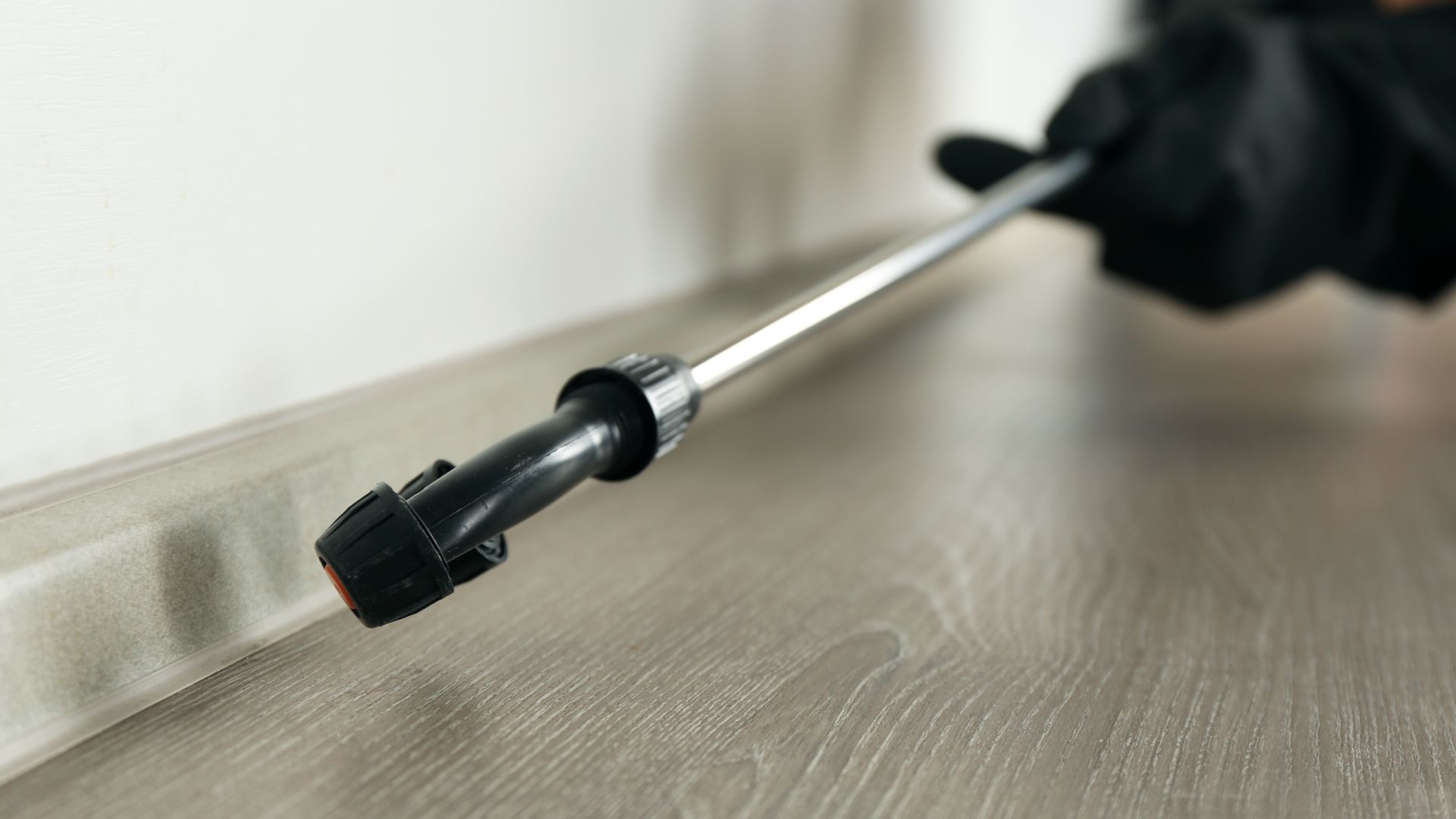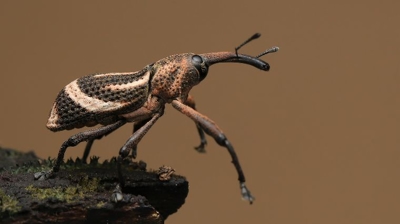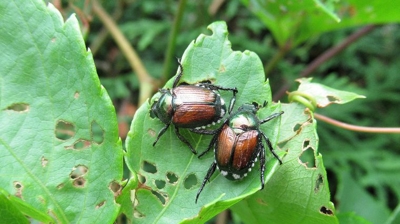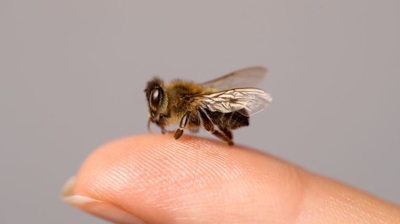
European Hornets
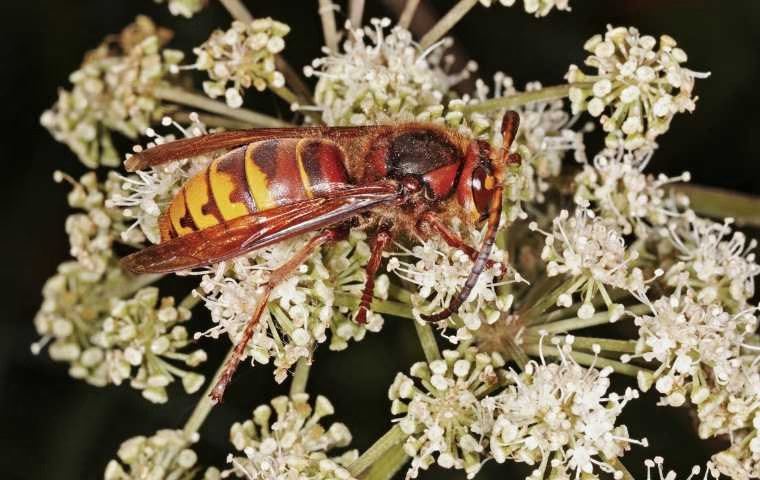
What Are European Hornets?
European hornets, scientifically known as Vespa crabro, are the largest eusocial wasps found in Europe and are known for their impressive size, distinctive appearance, and fascinating social behavior. These hornets play a significant role in their ecosystems and have garnered both interest and concern from people due to their size and stinging ability.
Are European Hornets Harmful?
European hornets (Vespa crabro) can be considered harmful in several ways. While they are not typically aggressive toward humans without provocation, their presence can become problematic. Here are some examples of the potential harm they may cause:
- Stings and Allergic Reactions: European hornets can deliver painful stings, and unlike honeybees, they can sting multiple times. For individuals who are allergic to insect venom, stings can trigger severe allergic reactions, including anaphylaxis, which can be life-threatening without immediate medical attention.
- Aggressive Nest Defense: While not usually aggressive, European hornets will fiercely defend their nests if they feel threatened. This can pose risks to homeowners, especially when nests are located near human activity—such as in attics, hollow trees, wall voids, or sheds.
- Nest Construction: Hornets often build large paper-like nests inside wall voids, hollow trees, or attics, and their chewing of wood pulp to create nest material can cause minor structural damage over time. While not as destructive as carpenter ants or termites, their nesting behavior may still lead to repair costs.
- Contamination and Clean-up: Once a nest is removed or abandoned, it may leave behind decaying organic matter, insect parts, and waste that can attract other pests and create sanitation issues.
- Intimidating Size and Buzzing: European hornets are among the largest wasps in North America, and their loud buzzing and large size can cause considerable alarm. This can discourage outdoor activities, especially in areas where nests are present.
- Reputation and Panic: Although they are not as aggressive or deadly as "murder hornets" (Asian giant hornets), many people confuse them with more dangerous species due to their similar appearance. This can lead to unnecessary panic and overreaction.
While European hornets can play a beneficial role by controlling pest insect populations, their potential to cause harm—particularly through stings, ecological disruption, and structural damage—makes them a species of concern in many settings. For property owners, pest control professionals, and environmental managers, monitoring and managing European hornet populations is crucial to minimize their risks and prevent infestations from becoming a serious problem.
European Hornet Appearance
European hornets (Vespa crabro) are among the largest social wasps found in North America and Europe. They are easily recognizable due to their size, coloration, and distinctive body structure. Here's a detailed description of their physical appearance to help you accurately identify them:
- Length: Adult European hornets typically range from 1 to 1.5 inches (25 to 38 mm) long, with queens being slightly larger than workers.
- Bulk: They are noticeably stout and robust, making them appear more formidable than other wasps or bees.
- Head: Reddish-brown with yellow markings on the face and mandibles.
- Thorax: Chestnut to dark brown, often with reddish hues, and covered in short, fine hairs.
- Abdomen: The most distinctive feature. It has a bright yellow background with black stripes or teardrop-shaped markings. The black pattern is more jagged or irregular than the more symmetrical bands seen on yellowjackets.
- Legs: Reddish or brownish in color.
- Wings: Light brown to amber-colored and slightly translucent.
- Typical Wasp Waist: Like all wasps, they have a noticeable “waist” between the thorax and abdomen.
- Antennae: Long and slightly curved.
- Eyes: Large, oval, and dark brown or black; they are set on the sides of the head and help with their acute vision.
- Stinger: Females (workers and queens) possess a smooth stinger and can sting multiple times, though they generally do so only when provoked.
- Flight Pattern: Their flight is purposeful and powerful; they are less erratic than other wasps and tend to hover briefly before landing.
- Sound: European hornets produce a deep, loud buzzing sound, which is more pronounced than the hum of a honeybee or the higher-pitched buzz of a yellowjacket.
- Nocturnal Activity: Unlike most wasps, European hornets are active at night and are attracted to light, often circling porch lights or windows after dark.
European hornets are unmistakable once you’ve seen one. Their large size, reddish-brown and yellow coloring, and loud buzz set them apart from most other wasps and bees.
European Hornet Habitat
European hornets (Vespa crabro) are highly adaptable and can be found in a variety of environments, but they tend to favor locations that provide both shelter and access to food. Understanding where they are most likely to be found—both geographically and in terms of nesting habits—can help with early detection and safe management.
Geographic Range
- Native Range: European hornets are native to Europe and parts of Asia.
- Introduced Range (U.S.): They were introduced to North America in the mid-1800s and have since established populations throughout the eastern and central United States. Their current range extends North: Into parts of southern Canada, South: As far as Georgia and Louisiana, and West: To states like Texas and the eastern Plains.
They prefer temperate, wooded regions but are increasingly adapting to suburban and even urban environments.
Nesting Locations
European hornets typically choose secluded, protected areas to build their nests. Their nests are made of chewed wood fibers mixed with saliva, forming a papery structure that can become quite large over time.
- Hollow Trees: One of their favorite natural nesting sites. They often occupy abandoned woodpecker holes or other cavities.
- Wall Voids & Attics: They may enter homes or buildings through vents, cracks, or eaves and build nests inside walls or attic spaces.
- Barns, Sheds, and Garages: Especially in rafters, behind stored items, or under eaves.
- Chimneys: If uncapped, chimneys can provide a warm, sheltered vertical cavity ideal for nesting.
- Abandoned Beehives or Animal Burrows: Occasionally, they may take over abandoned nests of other insects or animals.
Foraging Areas
Even if the nest is not immediately visible, you might notice foraging European hornets in various locations:
- Around Porch Lights and Windows at Night: They are one of the few wasps that are nocturnally active and are attracted to light sources.
- Gardens and Fruit Trees: They feed on overripe fruit, sap, nectar, and other insects, so they’re frequently seen near fruiting plants and flowering vegetation.
- Trash Bins or Compost Piles: Drawn to sugary food waste and protein-rich scraps.
- Insect-Rich Areas: Because they hunt other insects (e.g., flies, grasshoppers, caterpillars, and even bees), they may be seen patrolling gardens, meadows, or forest edges.
You’re most likely to find European hornets in forested or semi-rural areas, especially near wooded edges, orchards, or older buildings with easy access to nesting cavities. However, they’re increasingly showing up in residential neighborhoods and urban parks due to their adaptability. If you notice large hornets entering a fixed location repeatedly—especially around dusk—it may indicate a nearby nest.
European Hornet Diet
European hornets (Vespa crabro) are omnivorous, and their diet varies by life stage and seasonal needs. They are both predators and scavengers, and their feeding habits play a dual role in ecosystems: as both pest controllers and potential threats to beneficial insects like bees. Here is what European hornets eat:
Insect Prey (Primary Protein Source)
European hornets are highly predatory, particularly during the warmer months when they are raising young. The adults hunt and kill a variety of insects to feed their larvae.
Common prey includes:
- Flies
- Grasshoppers
- Crickets
- Caterpillars
- Dragonflies
- Beetles
- Other wasps and bees, including honeybees (which they may attack at the hive entrance)
- Moths and butterflies
They chew up the bodies of these insects into a paste (called a protein bolus) and feed it to the developing larvae in the nest. This high-protein diet is essential for brood development.
Sugary Substances (Carbohydrate Source for Adults)
While the larvae eat protein, adult hornets primarily consume carbohydrates, which provide them with the energy needed for foraging, nest building, and defending the colony.
Preferred sugar sources:
- Tree sap (particularly from oak and other hardwoods)
- Ripe or overripe fruit, such as apples, pears, grapes, plums, and peaches
- Nectar from flowers
- Honeydew (a sweet, sticky substance secreted by aphids and scale insects)
- Sugary human foods: soft drinks, juices, fruit jams, candy, and other sweet substances left outdoors or in trash cans
European hornets may be found feeding on fallen fruit in orchards or gardens, especially later in the season when natural carbohydrate sources are more limited.
Larval Secretions (Trophallaxis)
Adult hornets feed protein to larvae, and in return, larvae excrete a sugary secretion that adults consume. This mutual feeding behavior is called trophallaxis, and it helps fuel adult workers while they continue foraging and building the nest.
Carrion and Animal Matter (Occasionally)
European hornets are opportunistic and may scavenge on:
- Dead insects or small animals
- Fish or meat scraps in outdoor garbage bins or compost piles
- Occasionally animal feces, although this is less common and usually linked to nutrient foraging when food sources are scarce
Seasonal Dietary Shifts
- Spring/Early Summer: Focus is on protein to feed the developing brood; insect hunting is at its peak.
- Late Summer/Fall: As colony needs shift and new queens emerge, hornets begin foraging more heavily for sugar. This is when they’re more commonly seen near fruit trees, trash, and outdoor eating areas.
European hornets have a diverse and adaptive diet, feeding on both live prey and sugary substances. This versatility allows them to thrive in a wide range of environments, from dense forests to suburban backyards.
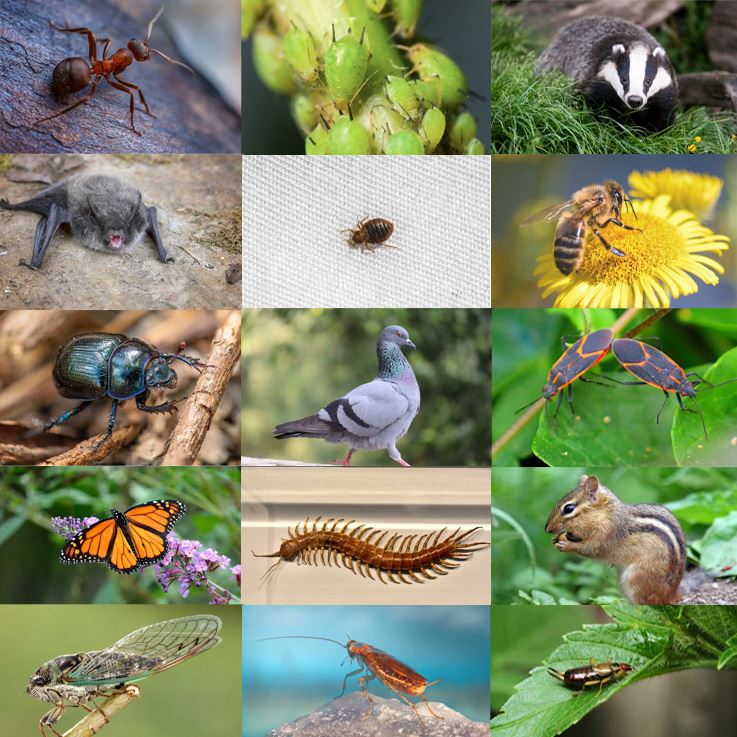
European Hornet Life Cycle
The life cycle of the European hornet (Vespa crabro) follows a complete metamorphosis, consisting of four stages: egg, larva, pupa, and adult. As a social wasp, the species operates in a caste system led by a queen, supported by sterile female workers, and seasonally producing males and new queens. Their life cycle is annual, meaning a colony completes its development within a single warm season and does not survive the winter, except for newly mated queens. Here is a breakdown of each phase of the European hornet’s life cycle:
Overwintering Queen (Late Fall – Early Spring)
- As cold weather arrives in late fall, the existing colony dies off, including the old queen, workers, and males.
- Only newly mated queens (gynes) survive the winter by going into hibernation. They typically seek protected locations such as:
- Under loose bark
- Inside hollow logs
- Within leaf litter
- In sheltered crevices near buildings or rock piles
- During this period, they remain dormant and rely on stored body fat until spring arrives.
Nest Initiation (Spring – April to May)
As temperatures warm in early to mid-spring, overwintered queens emerge and begin searching for suitable nest sites, often in:
- Hollow trees
- Wall voids
- Attics
- Sheds or barns
- The queen begins construction of a small paper nest by chewing wood fibers mixed with her saliva.
- She lays the first batch of eggs in individual hexagonal cells.
First Brood Development (Mid to Late Spring)
- Eggs hatch in about 5 to 8 days, becoming larvae.
- Larvae are fed a diet of chewed-up insects (protein) by the queen.
- After 10–14 days, the larvae spin a silken cap over their cells and pupate.
- Pupation lasts about 10–14 days, after which the first generation of adult workers (sterile females) emerges.
- Once workers emerge, they take over all foraging, feeding, and nest expansion duties, allowing the queen to focus solely on egg laying.
Colony Expansion (Summer – June to August)
- The colony rapidly grows during the summer as the queen continues laying eggs and the worker population increases.
- Workers forage for protein (to feed larvae) and carbohydrates (for themselves) and defend the nest.
- Nests may grow to house several hundred hornets, although they are typically smaller than those of yellowjackets.
- Nest size, activity, and foraging behavior peak during this period.
Reproductive Phase (Late Summer to Early Fall – August to October)
- As environmental conditions begin to change (shorter days, cooler nights), the queen begins laying fertile eggs that develop into new queens and males (drones).
- These reproductive hornets leave the nest upon maturation.
- Mating typically occurs near the nest site or in nearby areas.
- After mating:
- Males die shortly thereafter
- Fertilized queens seek out hibernation sites for the winter
Colony Collapse (Fall – October to November)
As the first hard frosts arrive:
- The original queen dies
- Workers perish
- The nest is abandoned and will not be reused
- Only the newly mated queens survive to restart the cycle the following spring.
The European hornet's life cycle is tightly synchronized with seasonal changes, operating on an annual reproductive cycle that peaks in late summer and collapses by late fall. Understanding this cycle is crucial for effective pest control, especially when timing treatments to intercept queens during nest initiation or managing nests before the reproductive phase begins.

Hear From Our Happy Customers
-
"Exceeds Expectations"
I can’t say enough positive things about this company... The tech that came out, Jarvis went above and beyond my expectations. Thank you guys, I will continue using your services.
- Jake M. -
"Wonderful Service"
Wonderful service. Jarvis is great. Took care of everything I needed. Thank you!
- Henry P. -
"Very Knowledgeable"
The tech that arrived was courteous, professional, and very knowledgeable. He was Great.
- Uerial I. -
"Great Communication"
Tech was on time, communication was great, and he accommodated my needs.
- Alonzo W. -
"Fantastic & Patient"
Jarvis was fantastic and patient. He answered my questions with an in-depth explanation and addressed all of my areas of concern. Would love for him to be my assigned tech going forward. Well done!
- Yonnette M. -
"Professional & Considerate"
I’m pleased with Miche services. Jarvis came today. Professional and considerate. Thank you!
- Judy B.
